Abstract
In view of increasing knowledge of the mechanism of production of hepatic damage by paracetamol, and the results of recent studies suggesting a beneficial effect from cysteamine administered soon after an overdose, studies were carried out in the rat on a number of possibly protective agents, using oral paracetamol in a dose of 2·5 g/kg body weight. Histological evidence of liver damage was reproducibly obtained with corresponding reductions in the levels of cytochrome P450. This was completely prevented by prior oral administration of cysteamine in a dose of 300 mg/kg body weight. The levels of cytochrome P450 were also maintained following an intraperitoneal injection of α-tocopherol (400 mg/kg body weight) but the effect on the histological evidence of liver damage was less. The administration of glutathione, propranolol and thioctic acid did not prevent the liver damage, although with these agents—except glutathione—the number of wedge shaped areas of necrosis (infarcts) in the liver was reduced.
Full text
PDF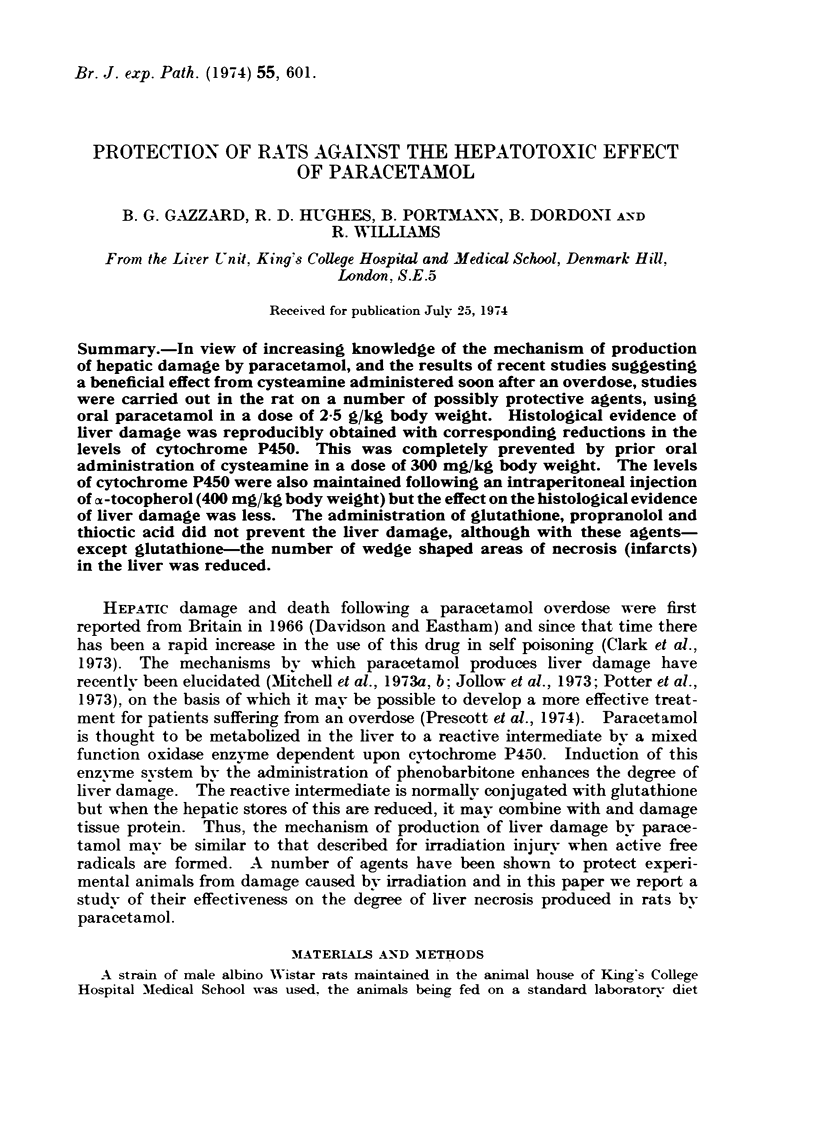
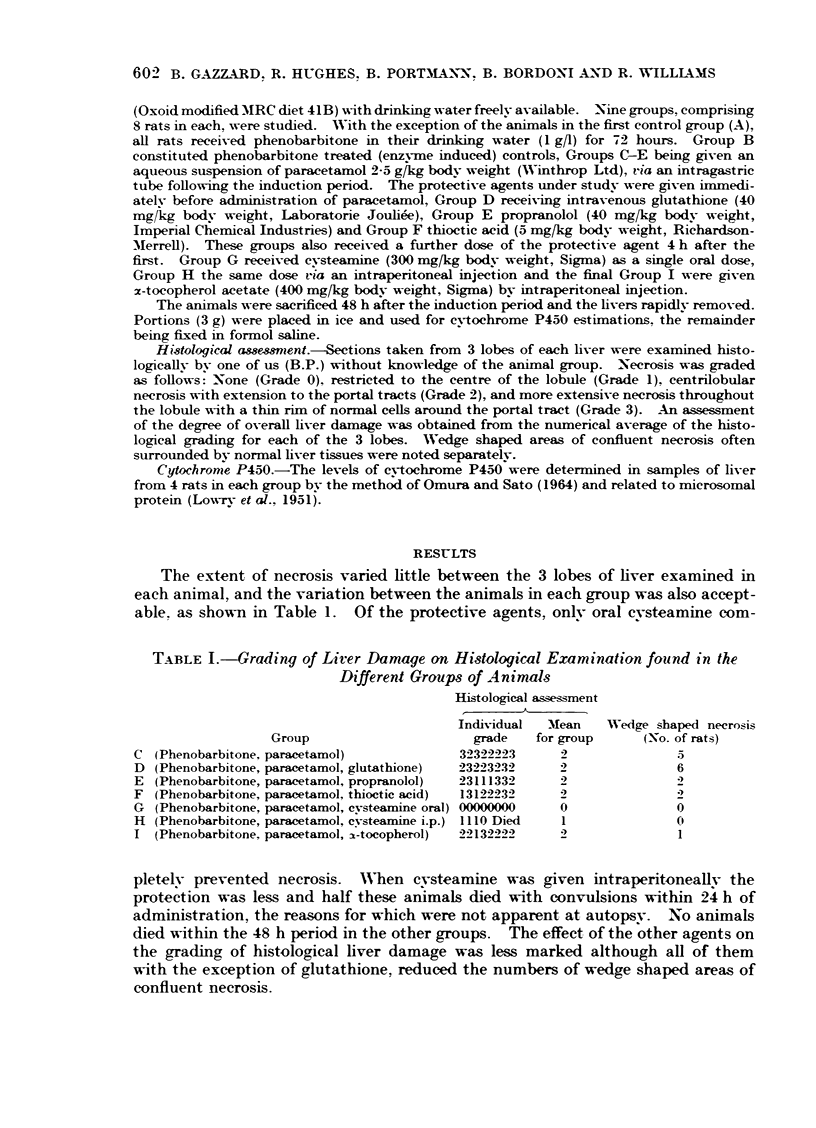
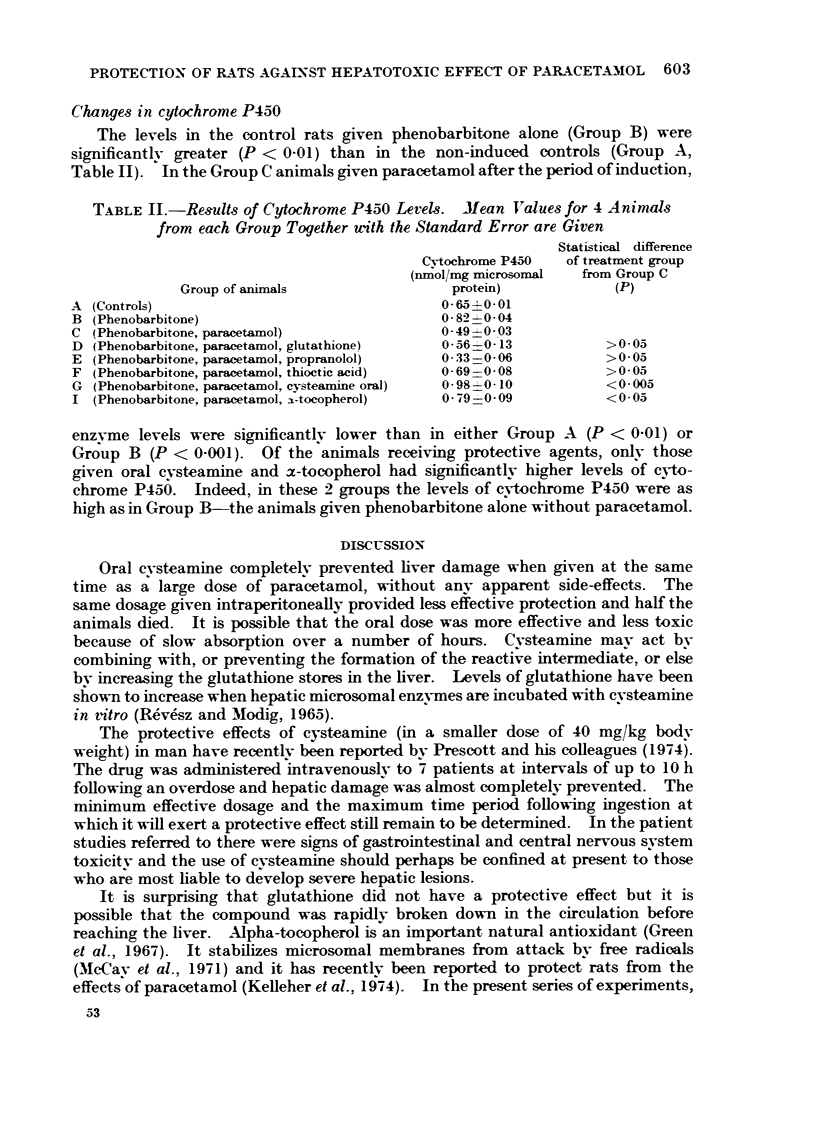
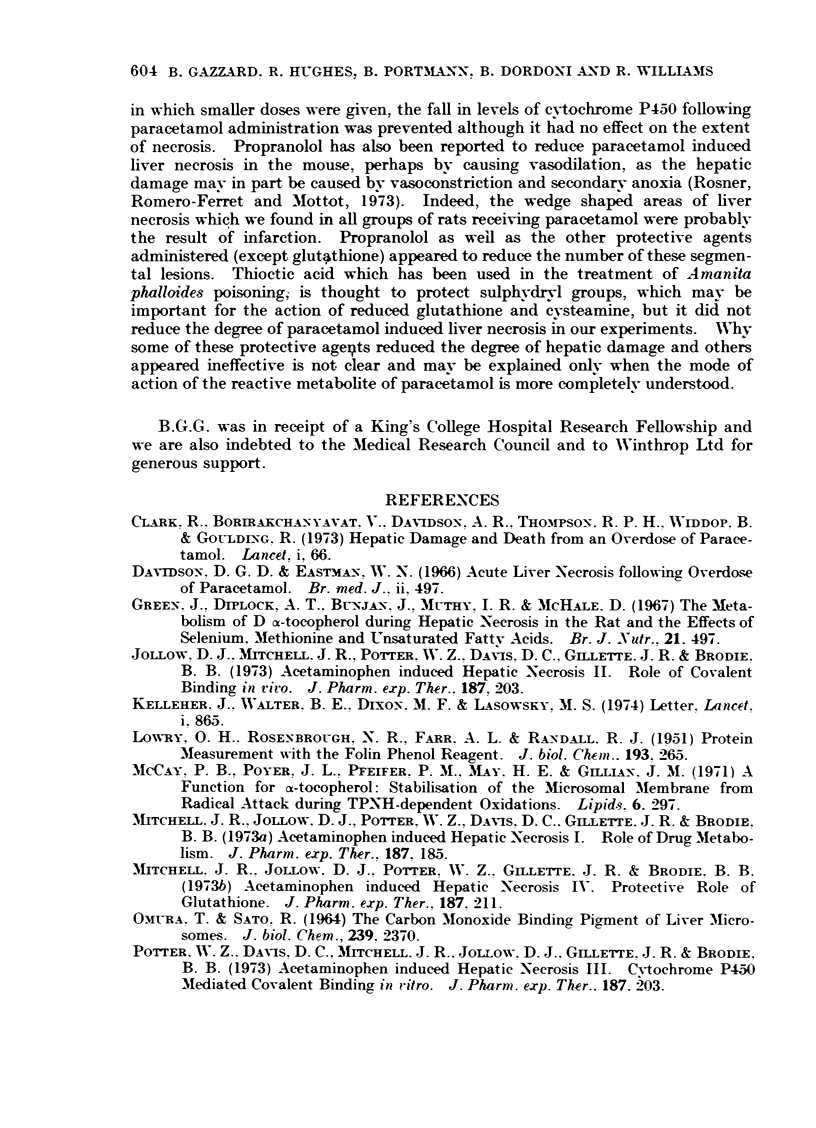
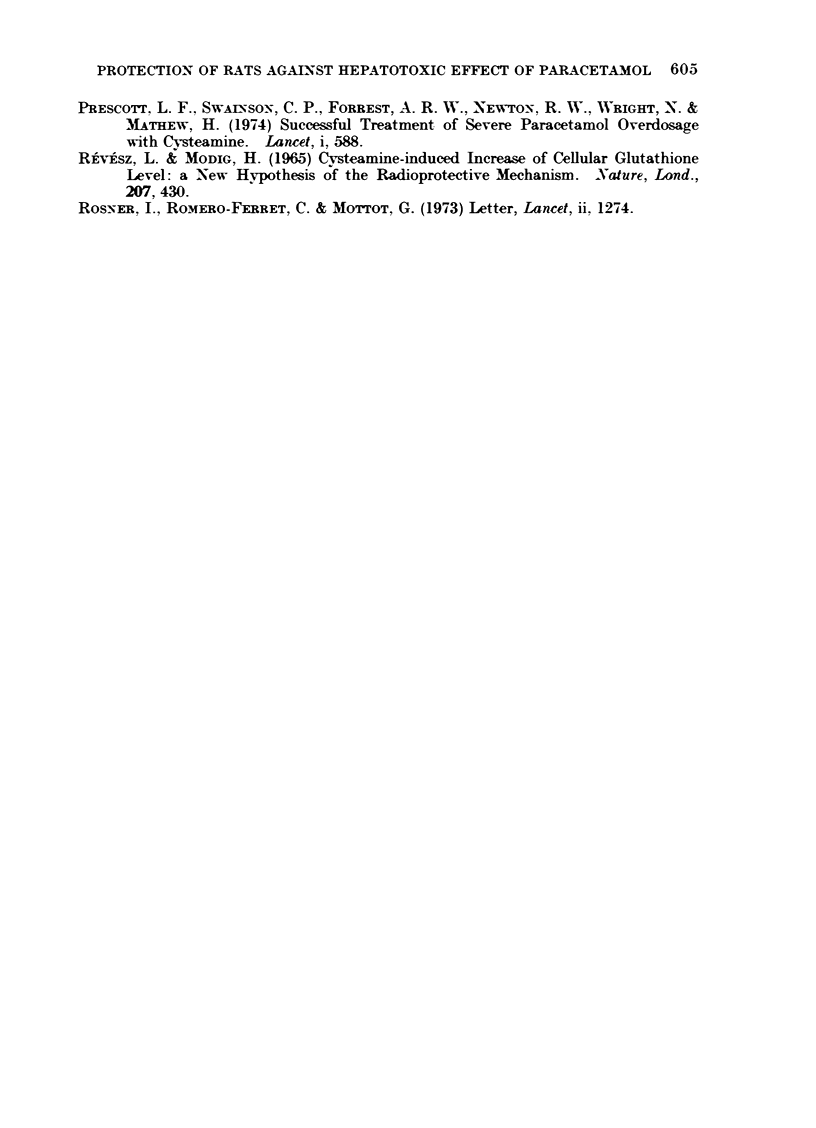
Selected References
These references are in PubMed. This may not be the complete list of references from this article.
- Green J., Diplock A. T., Bunyan J., Muthy I. R., McHale D. Vitamin E and stress. 4. The metabolism of D-alpha-tocopherol during nutritional hepatic necrosis in the rat and the effects of selenium, methionine and unsaturated fatty acids. Br J Nutr. 1967;21(2):497–506. doi: 10.1079/bjn19670050. [DOI] [PubMed] [Google Scholar]
- LOWRY O. H., ROSEBROUGH N. J., FARR A. L., RANDALL R. J. Protein measurement with the Folin phenol reagent. J Biol Chem. 1951 Nov;193(1):265–275. [PubMed] [Google Scholar]
- McCay P. B., Poyer J. L., Pfeifer P. M., May H. E., Gilliam J. M. A function for -tocopherol: stabilization of the microsomal membrane from radical attack during TPNH-dependent oxidations. Lipids. 1971;6(5):297–306. [PubMed] [Google Scholar]
- Mitchell J. R., Jollow D. J., Potter W. Z., Davis D. C., Gillette J. R., Brodie B. B. Acetaminophen-induced hepatic necrosis. I. Role of drug metabolism. J Pharmacol Exp Ther. 1973 Oct;187(1):185–194. [PubMed] [Google Scholar]
- Mitchell J. R., Jollow D. J., Potter W. Z., Gillette J. R., Brodie B. B. Acetaminophen-induced hepatic necrosis. IV. Protective role of glutathione. J Pharmacol Exp Ther. 1973 Oct;187(1):211–217. [PubMed] [Google Scholar]
- Potter W. Z., Davis D. C., Mitchell J. R., Jollow D. J., Gillette J. R., Brodie B. B. Acetaminophen-induced hepatic necrosis. 3. Cytochrome P-450-mediated covalent binding in vitro. J Pharmacol Exp Ther. 1973 Oct;187(1):203–210. [PubMed] [Google Scholar]
- Potter W. Z., Davis D. C., Mitchell J. R., Jollow D. J., Gillette J. R., Brodie B. B. Acetaminophen-induced hepatic necrosis. 3. Cytochrome P-450-mediated covalent binding in vitro. J Pharmacol Exp Ther. 1973 Oct;187(1):203–210. [PubMed] [Google Scholar]
- Prescott L. F., Newton R. W., Swainson C. P., Wright N., Forrest A. R., Matthew H. Successful treatment of severe paracetamol overdosage with cysteamine. Lancet. 1974 Apr 6;1(7858):588–592. doi: 10.1016/s0140-6736(74)92649-x. [DOI] [PubMed] [Google Scholar]
- Révész L., Modig H. Cysteamine-induced increase of cellular glutathione-level: a new hypothesis of the radioprotective mechanism. Nature. 1965 Jul 24;207(995):430–431. doi: 10.1038/207430a0. [DOI] [PubMed] [Google Scholar]


